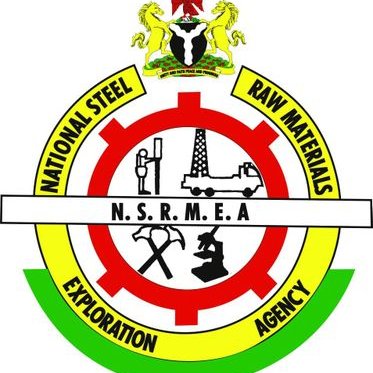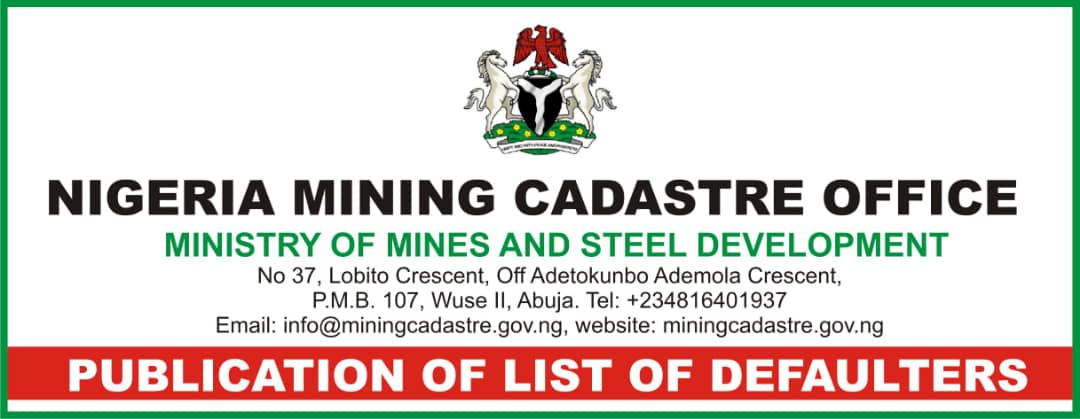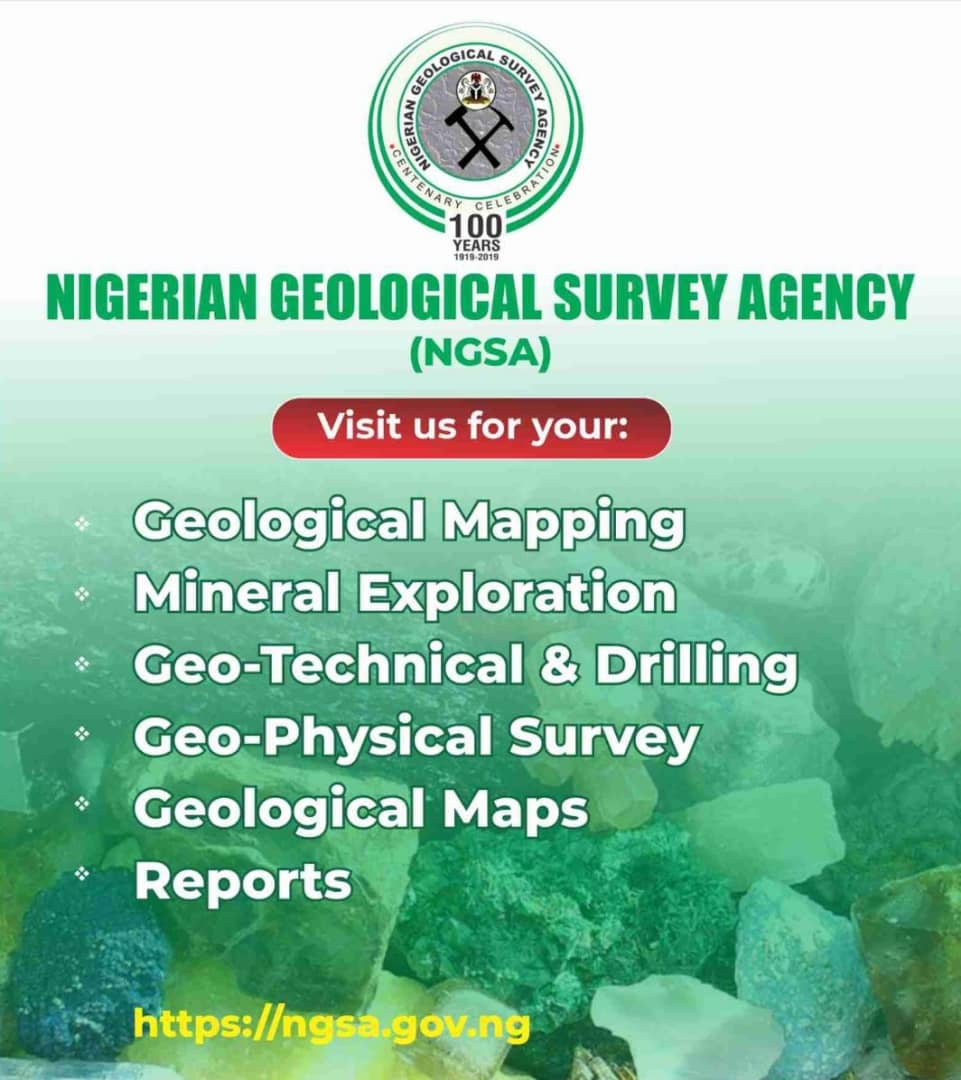. . . as NGSA aims to deepen its capacity through innovations in seismology, capacity building.

The Minister of Solid Minerals Development, Dr. Dele Alake on Tuesday, announced that Government will achieve world-class nationwide seismic monitoring of the country, saying that the goal is in line with the commitment of the administration to ensure safety of lives and properties by averting or mitigating natural disasters.
“I can make a policy announcement here that we are going to expand this seismic monitoring station to cover the rest of Nigeria,” the minister stated, adding that government will vigorously pursue the policy by making available to the Nigerian Geological Survey Agency (NGSA), the necessary resources needed to set up seismic stations in all parts of the country.
Alake, who made the announcement on Tuesday while commissioning the National Seismic Monitoring Station 5, situate at Katampe, Abuja, agreed with the NGSA Director General that natural disasters, such as earthquakes, are natural occurrences which cannot be exactly pre determined even by scientific means. He noted that seismic stations would enable early detection of imminent tremors and quakes, and help to mitigate the disaster.
The minister pointed out that the overarching priority to safeguard lives and properties of Nigerians informed the Federal Government’s decision to establish seismic monitoring stations.
Citing incidences of earth tremors that had taken the country unawares in recent past, the Minister asserted: ‘What we need to do is to keep expanding the frontier of our knowledge, make arrangements to mitigate natural disasters and safeguard the lives and properties of Nigerians. It is pivotal to the efforts of government to enhance it’s service delivery to its citizenry as a responsible entity.”
Dr Alake said the National Seismic Monitoring station at Katampe in Abuja built by the Nigerian Geographical Survey Agency NGSA, (an agency of the Ministry) which is the 5th seismic monitoring station will enable the detection and monitoring of future occurrence of earthquake and tremor in and around the FCT.
He said: ”Who knows the next place, so am happy we are now being compelled to make initiatives. And that is why government is prepared to support any act of creativity from whichever side as long as it is proffering solutions to problems of our environment.”
”These stations are located in University of Abuja Gwagwalada, Nasarawa State University, Keffi and the Veritas University, Bwari with the centre at NGSA Headquarters Utako (Abuja). Other stations are NGSA offices in Kaduna and Ilorin. These seismic monitoring stations will enable the detection and monitoring of future occurrence of earthquake and tremor in and around the FCT and shall therefore help to upscale the level of safety in the FCT”, the Minister said.
While commending the collaborative efforts between the Nigerian Geological Survey Agency (NGSA) and the University of Abuja for bringing the seismic project into fruition, the Minister said he was extremely elated that this project will mitigate the effects of global climate change. Dr Alake affirmed that it is one of the reasons why the Tinubu led administration supports every innovative measures being proffered to improve the living standards of Nigerians.
The Minister commended the initiative to all other sectors of our national life; saying ” the NGSA, and of course the Ministry of Solid Minerals Development has taken this bold step to initiate, to monitor seismic tremors anywhere in Nigeria; and we are going to expand the scope to cover more areas. The Renewed Hope Agenda of this present government covers all aspects of our human endeavour”.
We are extending the frontiers of knowledge. Even in the Ministry of Solid Minerals Development, when we came in, we rolled out the 7-point Agenda covering all aspects of Solid Minerals The first thing we did, is to put the solid minerals of Nigeria on the global map. And how did we do it? By marketing the potentials we have in Nigeria to the investing world,” Dr Alake enthused.
Director-General, Nigerian Geological Survey Agency, Dr Abdulrazaq Garba, said a robust seismic monitoring capability aligns with the Federal Government Renewed Hope Agenda as it concerns sustainable development involving the integration of technology, innovation and strategic planning to create an environment that is efficient, resilient and responsive to the needs of the nation.”
Discussing some ongoing efforts of the Agency to strengthen capacity for mandate deliver in this regard, Dr. Garba stated: “The NGSA is adopting and integrating innovative technology for data acquisition, data integration, modeling, and predictive geosciences as well as earth systems monitoring and integrated data management as a strategy to enhance national security and development.”
The Director General stated: “I won’t end this address without drawing the Honourable Minister’s attention on the need deepen the capacity of the NGSA in Seismic Monitoring, to bring the staff saddled with these responsibilities abreast with modern technical innovations in seismology, instrumentation, earthquake source parameter detections, seismogram analysis, instrument configuration and calibration.” This, he said will improve the quality and applicability of data on seismicity coming from the stations.
Dr. Garba said as the Federal Government plans to commission more monitoring stations in other localities of the nation, there is urgent need to train more staff for swifter response, more reliable data analysis and effective coordination.
While commending President Bola Ahmed Tinubu “for the reinvigorated and renewed efforts targeted at optimum performance of institutions of government and development of critical national infrastructures,” he noted that the policy also emphasizes the need for cooperation of governments internationally, nationally and sub-nationally towards the sustainable development that guarantees the future.
“Earthquake and seismic monitoring systems are vital tools for protecting infrastructure from the destructive power of seismic activity. By providing real-time data on the location and magnitude of an earthquake or other forms of ground motion, the systems enable quick assessment of the potential damage to structures and take necessary actions to mitigate losses including the protection of lives.”
The Director General expressed delight at the collaborative efforts between the Federal Capital Territory (FCT) Administration and the NGSA championed by the immediate past and current Ministers of the FCT through the Federal Capital Development Authority seeing to the development and operationalization of the monitoring station through the provision of land and electricity power infrastructure.
He hailed the partnership as one that is “already bearing fruit with the recent sharing of information and data from the NGSA-1 in Utako and this Katampe station, the NGSA-5, on measured seismicity around Abuja and immediate environs.”
Discussing the commitment of the Agency, he said: “The NGSA has the statutory role of providing relevant and up-to-date geosciences information necessary for economic development of Nigeria.”
“This is accomplished through a systematic process of gathering, collating, assessment and dissemination of all geoscience information related to rocks, minerals and groundwater and other earth resources of the country.”
While saying that the consequences of destructive ground motions including earthquakes could place a heavy burden on the society and national economies, particularly in developing countries, Dr. Garba explained that in order to avoid or at least to mitigate the negative effects of such events, a thorough scientific knowledge of their geological and geophysical causes, their structural, kinematics and dynamic characteristics as well as a developed capability to monitor and to analyze them is indispensable.
“Though Nigeria is not in the category of those referred to as earthquake-prone countries, in recent times, there has been increased occurrence of low magnitude seismicity in parts of the country such as in Mpape and Maitama in FCT Abuja; Kwoi and Kagaroko in Kaduna; Ilorin in Kwara State; and Shaki in Oyo State. In response to this and recognizing the risk earthquake could pose to life, critical infrastructure and national development, the Federal Government of Nigeria through the Nigerian Geological Survey Agency moved to establish a network of Earthquake and Seismic Monitoring Stations.”
“The Agency’s active seismic monitoring stations located in Utako-Abuja, Kaduna, Ilorin, Keffi and now Katampe-Abuja are equipped with state-of-the-art instrumentation and are linked to the International Federation of Digital Seismograph Networks (FDSN),” he said.
According to him, all the stations including the Katampe station are equipped with state-of-the-art Gulralp seismometers, which are broad band, weak-motion triaxial seismometers ideally suited for long-term temporary and permanent installations in areas with low to moderate noise levels.
“The instruments’ broadband response and low self-noise level make them suitable for seismic monitoring at all scales: local, regional and teleseismic.”
He said the NGSA stations have been able to record many notable teleseismic events including the recent Philippines’ earthquake which occurred on 2nd December, 2023, the China’s earthquake on 2 January, 2023 and the Japan’s earthquake on the 1st of January 2023. Additionally, many localized events have been recorded by the stations including the NGSA stations in Abuja.
“Though the causes of these localized vibrations and ground motions are yet to be comprehensively determined, their nature as recorded by the seismographs show that they are likely due to blasting of rocks.
“It is recommended that discreet and subtle investigations be carried out within and around the environment by relevant authorities to help determine and track the cause of these recorded vibrations,” he added.








